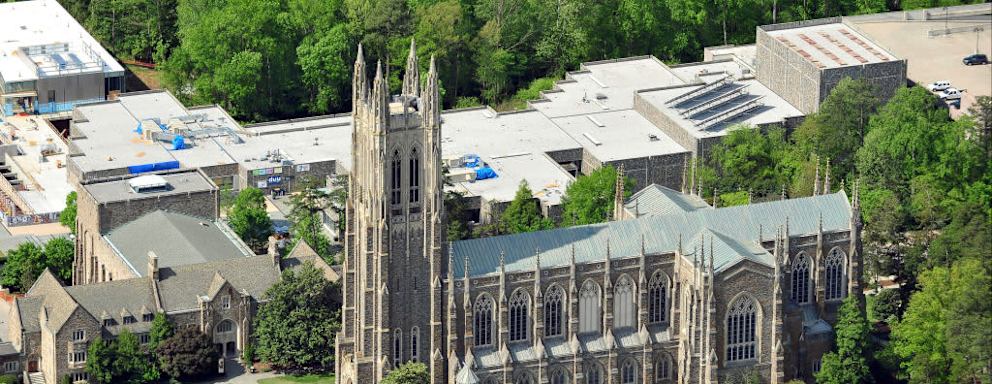Here Are the Top Nursing Schools in the U.S., According to a Controversial Ratings System
 Credit: Image Credit: Lance King / Getty Images Sport
Credit: Image Credit: Lance King / Getty Images Sport- The U.S. News & World Report nursing program rankings have been released for 2023-2024.
- The rankings are based on ratings by academics.
- The ranking methodologies are under fire for a variety of reasons.
On Sept. 18, U.S. News & World Report released its ranking of the top undergraduate nursing school programs. The company’s influential rankings, which are well known by the public, have been the subject of controversy in recent years and have such have undergone significant changes recently.
Some question the fairness of the rankings, while others question the value of numeric rankings in general and suggest that too much importance is placed on these lists.
U.S. News & World Report Nursing Program Ranking
According to U.S. News & World Report, its list of top nursing school programs is based on a survey sent to deans and senior faculty members of 657 nursing schools and nursing departments. The survey includes only accredited schools that have awarded at least 40 bachelor of science in nursing (BSN) degrees. The response rate for the survey was 30%.
Academics participating in the rankings are asked to rate the quality of peer institutions on a 5-point scale from outstanding to marginal, with an option to indicate “don’t know” if the respondent is unfamiliar with a program. The two highest and two lowest scores are eliminated, and the average score is calculated.
According to the U.S. News & World Report methodology, the top bachelor of science in nursing (BSN) programs in the U.S. for 2023-2024 are:
- Duke University (Durham, North Carolina)
- University of Pennsylvania (Philadelphia)
- Emory University (Atlanta)
- The Ohio State University (Columbus)
- University of Iowa (Iowa City)
- University of North Carolina at Chapel Hill
- University of Alabama at Birmingham
- University of Michigan (Ann Arbor)
- University of Washington (Seattle)
- Boston College (Chestnut Hill, Massachusetts)
- Case Western Reserve University (Cleveland)
- New York University (New York City)
- Oregon Health and Science University (Portland)
- University of Maryland, Baltimore
- University of Pittsburgh
- University of California, Los Angeles
- University of Illinois-Chicago
- University of Kentucky (Lexington)
- University of Minnesota, Twin Cities (Minneapolis)
- The University of Texas Health Science Center at Houston
- University of Virginia (Charlottesville)
- University of Wisconsin-Madison
Nursing School Rankings: The Controversy
In response to controversy, U.S. News has changed its ranking methods for schools. It eliminated some measures that reflect school and alumni wealth (proportion of graduates who borrowed federal loans, high school class standing, alumni giving rate, terminal degree faculty, and class size).
It also added aspects related to diversity, such as how many of its students receive Pell Grants and how many graduates who received federal loans earn more than high school graduates.
Still, peer assessment is the strongest factor, making up 20% of a school’s total score. Some critics say there is too much emphasis placed on peer assessments.
And a school’s past performance in rankings strongly affects its future performance in peer reviews, whether or not anything has changed at the school. Even a sports team’s performance can affect the ratings.
Another criticism of the rankings is that they get too much attention and provide an incentive for schools to game the system. Columbia University was one of the most prominent schools that was found to be manipulating its data. Columbia was later one of the schools that pulled out of the US News rankings, citing unfairness.
Even U.S. Secretary of Education Miguel Cardona said, at a conference on law schools and data: “It’s time to stop worshiping at the false altar of U.S. News & World Report. It’s time to focus on what truly matters: delivering value and upward mobility.”
Other critics note that while it is an improvement that the ratings focus on outcomes, even outcomes are a flawed measure. They do not, for example, assess student experience, which is a vital part of choosing the right school.
Many law and medical schools, including some of the top programs in the nation, have boycotted the U.S. News rankings entirely and declined to submit information. However, U.S. News substituted this previously submitted information from colleges for publicly available data to continue to provide rankings.
Despite the criticism and widespread boycotts among medical and law schools, relatively few undergraduate schools declined to provide information to U.S. News for its rankings. None of the top nursing schools declined.
What does this mean as you look for a top nursing school?
First, remember that the U.S. News & World Report listings measure only certain aspects of a school, and those may not match what is most important to you.
For example, the rankings do not include many quality-of-life measures, such as school safety, or personal factors, such as your desired distance from home or whether you want to attend an online, hybrid, or on-campus program.
They also do not include cost, which is a vital consideration for most students.
Look at what matters to you, and ignore the factors that do not.